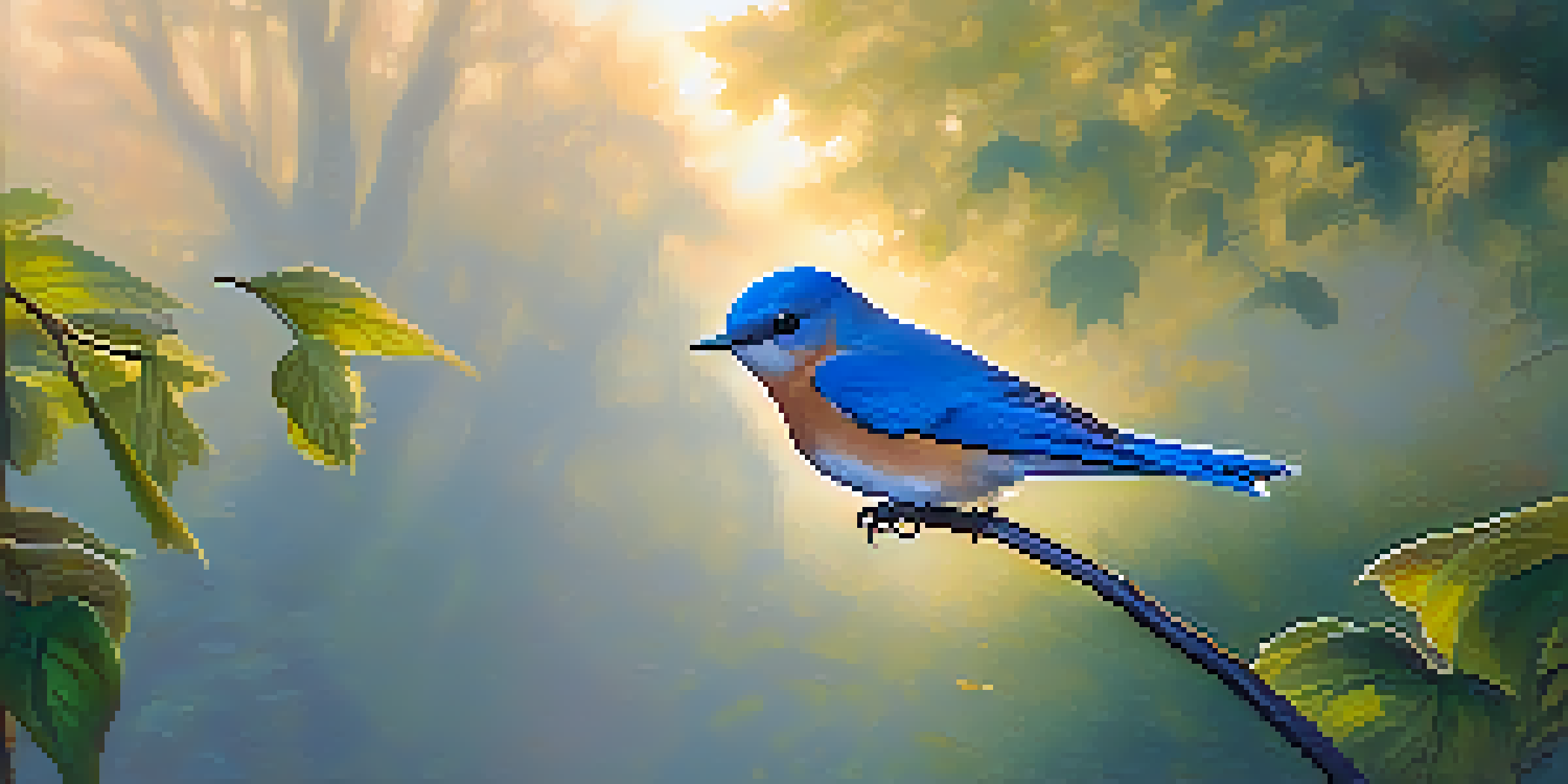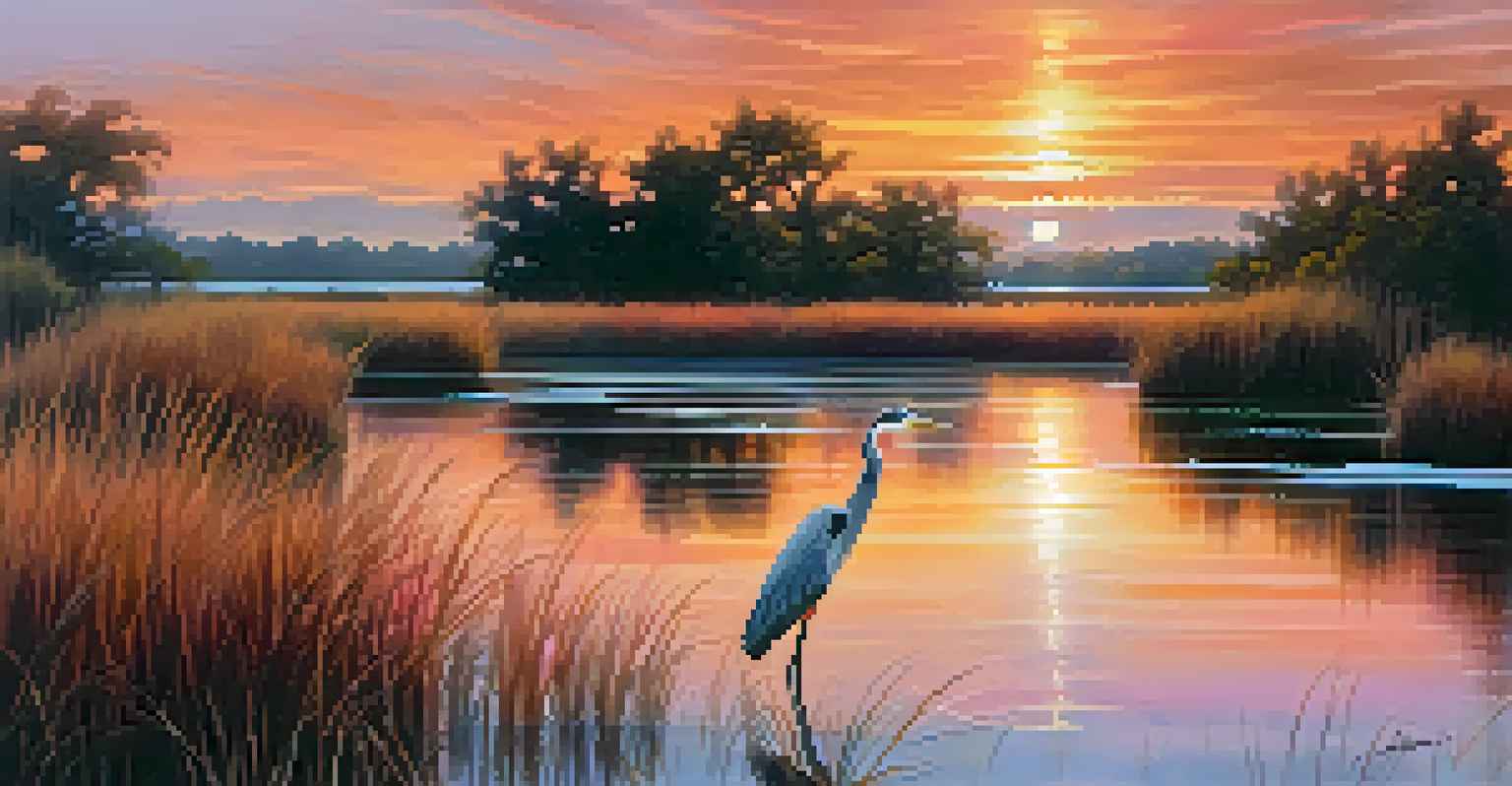Photographing Birds: Techniques for Capturing Wild Life

Understanding Bird Behavior for Better Shots
To photograph birds effectively, it's crucial to understand their behavior. Knowing when they are most active, such as during feeding or mating seasons, can give you the edge you need for that perfect shot. Take some time to observe your subjects; this patience pays off enormously in wildlife photography.
In photography, there is a reality so subtle that it becomes more real than reality.
Birds often have specific routines, and familiarizing yourself with these can enhance your chances of capturing them in action. For instance, many songbirds are more vocal in the early morning. Planning your photography sessions around these natural behaviors will help you anticipate their movements.
Additionally, each species has unique characteristics that can affect how you approach them. Learning about their habitats and feeding habits can help you choose the right locations and times for your photography adventures.
Choosing the Right Equipment for Bird Photography
Having the right gear is essential for capturing stunning bird images. A camera with a fast shutter speed is crucial, as birds can be quick and unpredictable. A DSLR or mirrorless camera with a telephoto lens will allow you to capture close-ups from a distance, minimizing disturbance to the birds.

Consider investing in a tripod or monopod for stability, especially when using heavy lenses. This will make it easier to track birds in motion without compromising the sharpness of your images. Additionally, using a camera with a high ISO performance can help you shoot in lower light conditions, which is often when birds are most active.
Understanding Bird Behavior Matters
Observing birds' routines and active times can significantly improve your photography outcomes.
Don’t forget about accessories like lens hoods and filters; these can significantly improve your images by reducing glare and enhancing colors. The right equipment can make a world of difference in the quality of your shots.
Mastering Camera Settings for Bird Photography
Understanding camera settings is vital for capturing birds in their natural habitat. Start with a fast shutter speed to freeze motion; typically, speeds of 1/1000 of a second or faster are ideal for flying birds. Experimenting with aperture settings can also help create that beautiful blurred background, making your subject stand out.
The camera is an instrument that teaches people how to see without a camera.
Using continuous shooting mode allows you to take multiple frames per second, increasing your chances of getting that perfect moment. Additionally, focusing on the eyes of the bird will ensure that your photos are sharp and engaging, drawing viewers into the subject.
Don't shy away from experimenting with different settings. The beauty of digital photography is that you can review your shots immediately and adjust accordingly. Learning from each session will help you refine your technique over time.
Finding the Perfect Locations for Bird Photography
Location is everything when it comes to bird photography. Parks, nature reserves, and wetlands are often teeming with various bird species. Research local hotspots where birds are known to congregate, and don’t be afraid to ask fellow photographers for recommendations.
Consider visiting during different seasons, as migratory patterns can bring new species into your area. Winter may offer opportunities to photograph birds that are not present in warmer months, while spring can be ideal for spotting nesting behaviors.
Right Gear Enhances Photography
Using a fast camera with appropriate lenses and accessories is essential for capturing stunning bird images.
A good location also requires some stealth. Arriving early and staying quiet will help you blend into the environment, increasing your chances of getting close to your subjects without scaring them away.
Utilizing Light for Stunning Bird Photography
Lighting can make or break a photograph, especially in bird photography. The best light for shooting is usually during the golden hours—early morning or late afternoon—when the sunlight is softer and warmer. This type of light can enhance the colors of the birds and add depth to your images.
Avoid shooting in harsh midday light, which can create unflattering shadows and highlights. If you're caught in this situation, look for shaded areas or wait for clouds to diffuse the sunlight. Sometimes, overcast days can provide even lighting that is perfect for bird photography.
Experimenting with backlighting can also yield stunning results. Capturing a bird in silhouette against a bright sky can create an artistic and dramatic effect that stands out in your portfolio.
Practicing Patience and Ethical Bird Photography
Patience is a photographer's best friend, especially in wildlife photography. Birds can be unpredictable, and waiting for the right moment can sometimes take hours. Embrace the stillness and use this time to observe the environment; you might discover other fascinating details worth capturing.
It's also essential to practice ethical bird photography. Always respect wildlife and their habitats by keeping a safe distance and avoiding disturbing nests. Use your zoom lens to get close-up shots without intruding, ensuring that your photography does not harm the birds or their environment.
Patience and Ethics Are Key
Practicing patience and respecting wildlife leads to better photo opportunities and a positive impact on the environment.
Remember, capturing beautiful images is not just about the photograph; it's about ensuring that the wildlife continues to thrive for future generations. Your respect for nature will reflect in your work and inspire others to do the same.
Editing Your Bird Photographs for Maximum Impact
Post-processing is a crucial step in enhancing your bird photographs. Programs like Adobe Lightroom or Photoshop can help you adjust exposure, contrast, and color balance to make your images pop. Even simple adjustments can significantly improve the final look of your photos.
Be careful not to over-edit; the goal is to enhance the natural beauty of the birds without altering their essence. Cropping can also help to focus attention on your subject, eliminating distractions from the background.

Consider creating a consistent editing style that reflects your artistic vision. This will help your work stand out and create a cohesive body of bird photography that showcases your unique perspective.